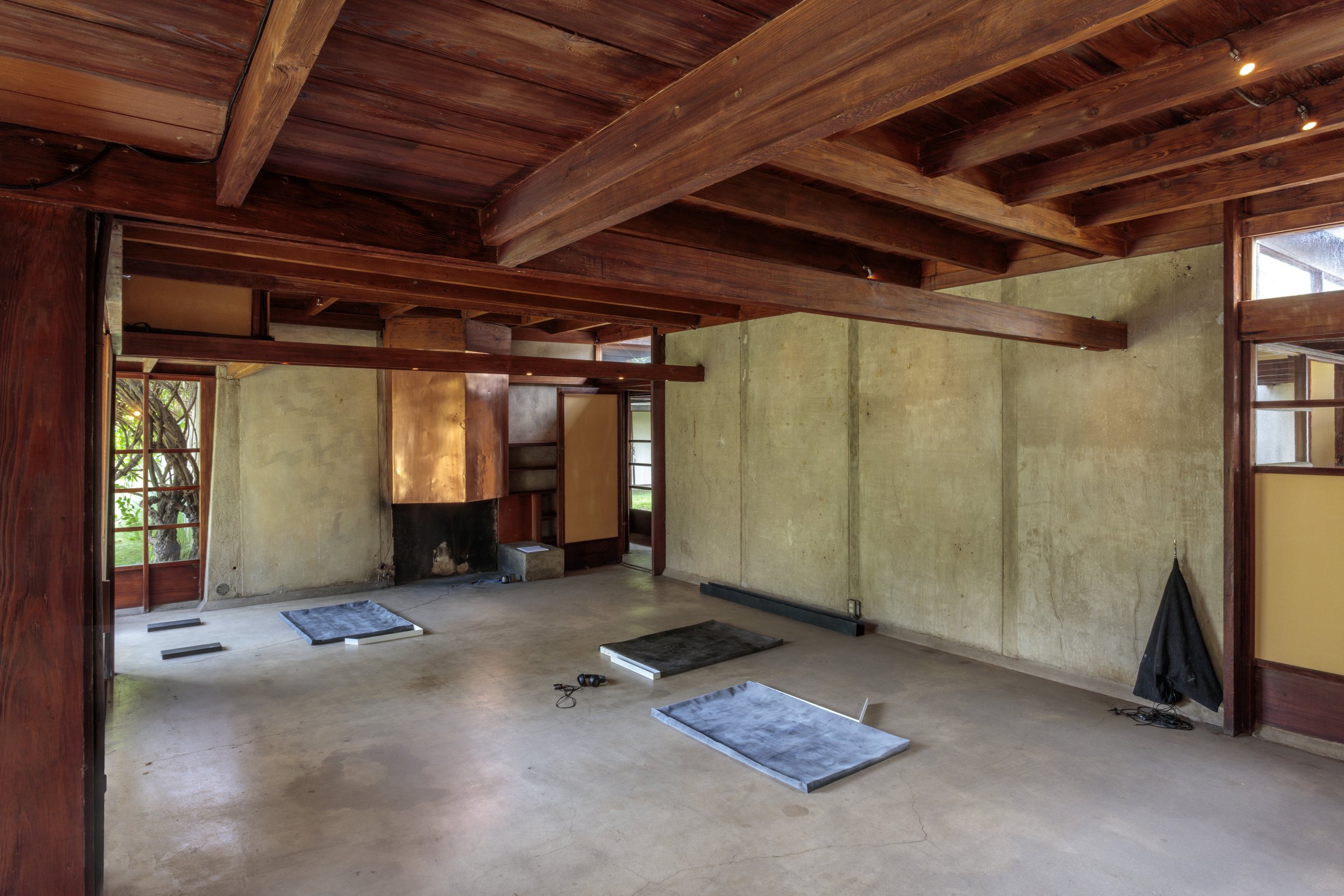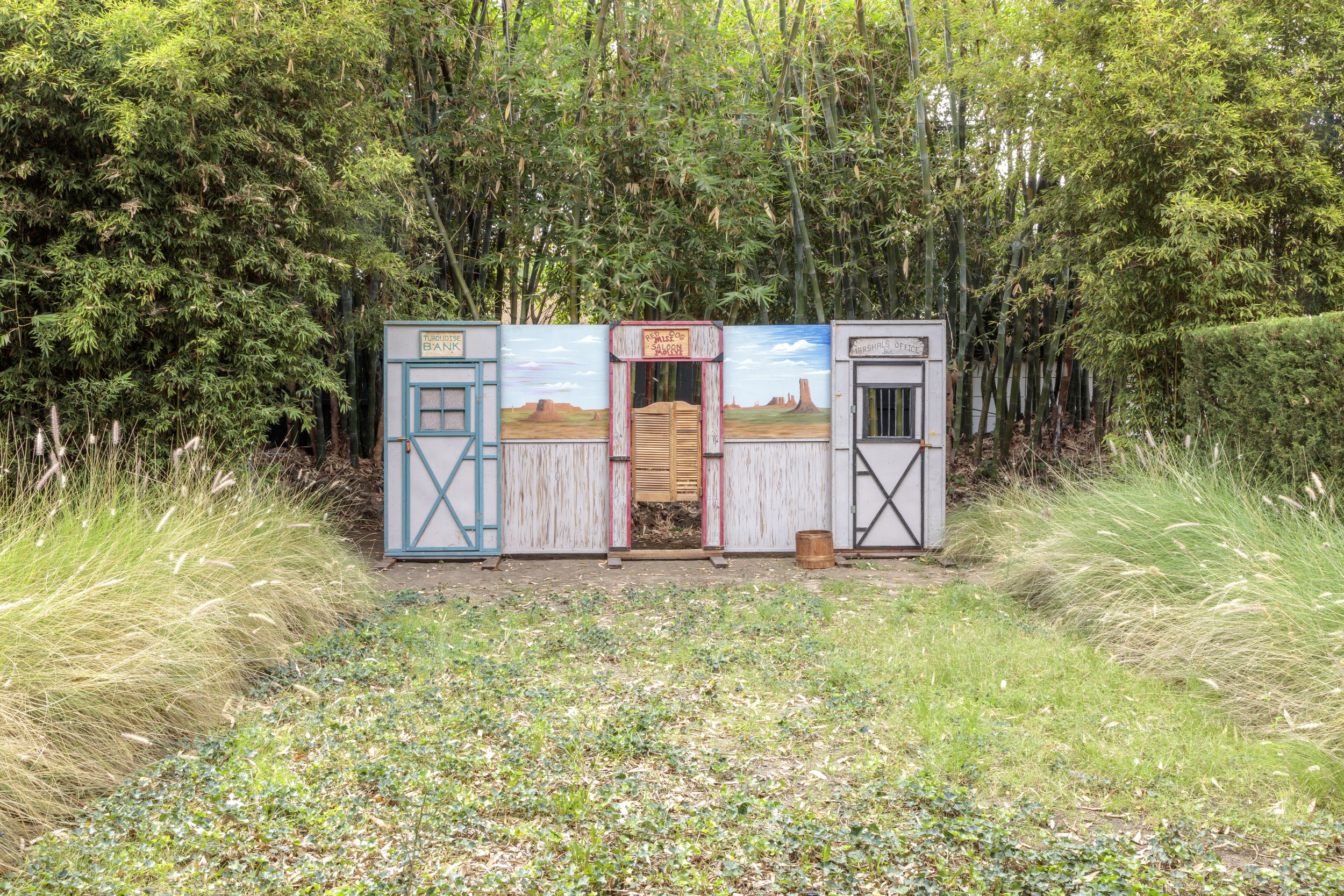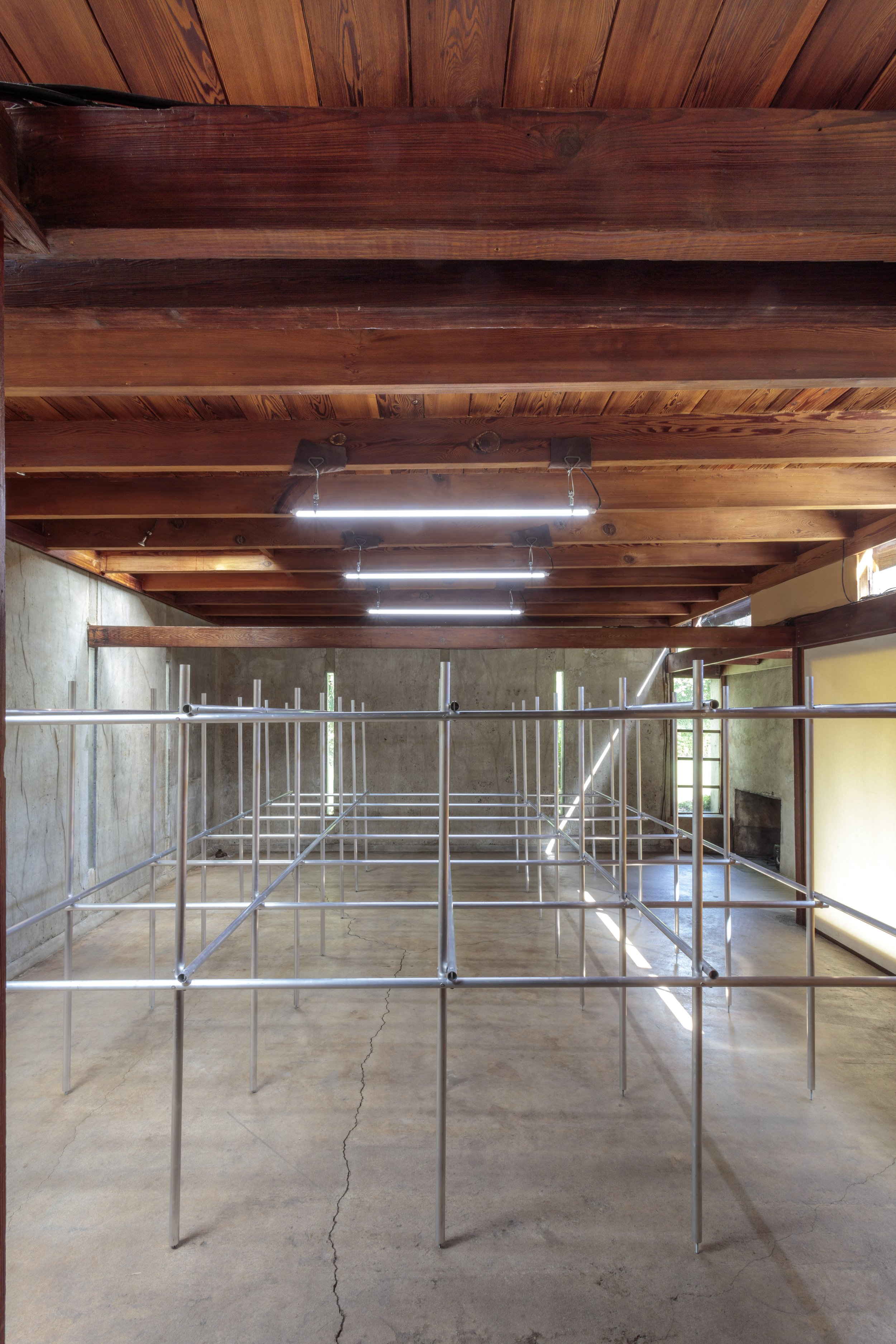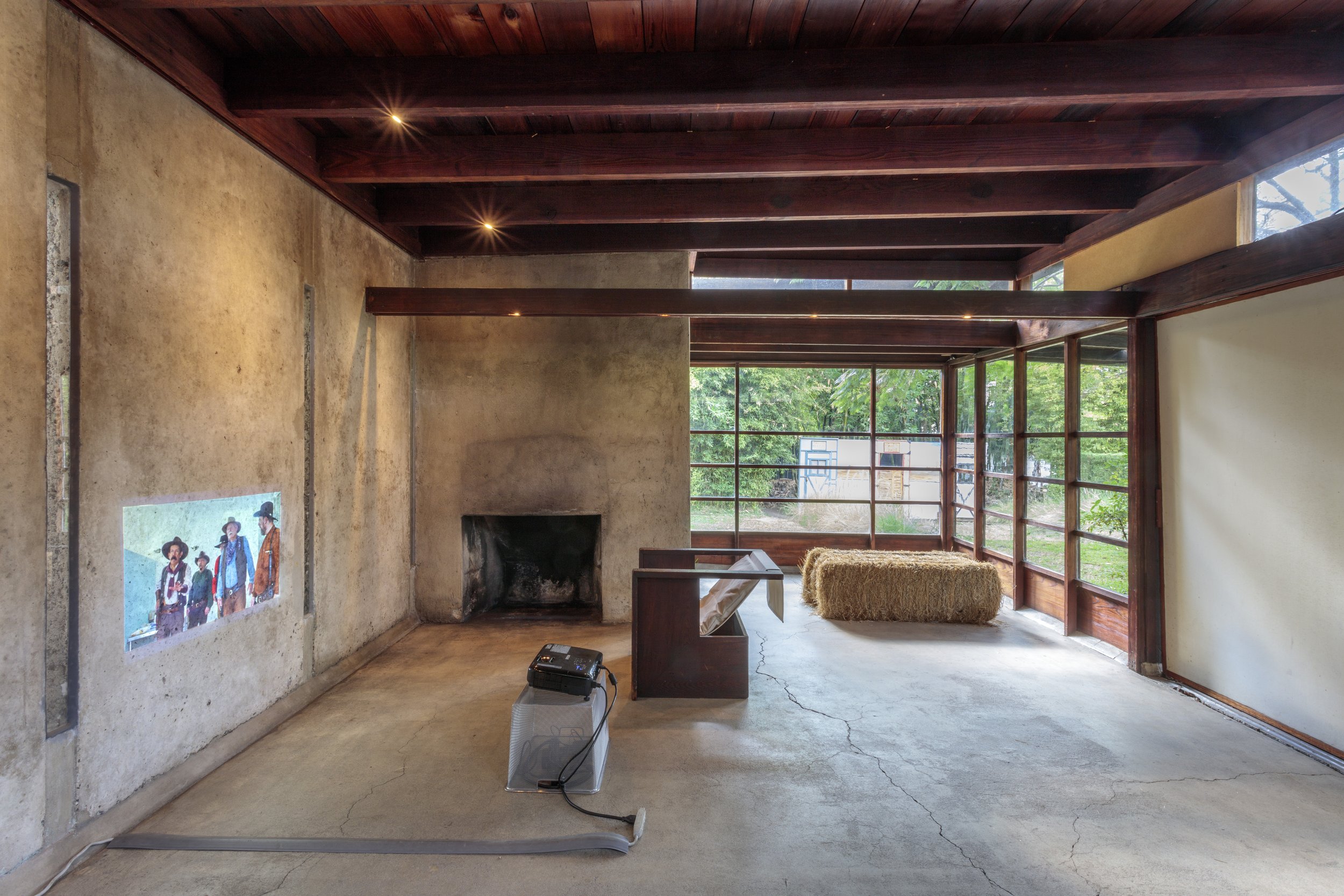Installation view of Final Projects: Group XLII. Photography by Joshua White, 2016.
Vienna-based artists Julian Feritsch and Julia Hohenwarter operate simultaneously as forensic examiners of space and producers of the environment to be examined. Negotiating different forms of deserted public landscapes—synthetic manicured environments across the corporate spaces of Los Angeles—the two focused their study on the ‘leftovers’ of quasi-public space. What narratives form from the traces and residue of bodies that have passed through contemporary, controlled spaces? For their installation at the Schindler House, Feritsch and Hohenwarter presented a scenic, multimedia environment in the set-up of an intimate, impromptu gathering, much like a picnic. Visitors to the exhibition found themselves archeologists within the situation, slowly putting together again the activity evidenced by the sculptural, textual, textural, and audio components.
For their installation at the Schindler House, Stockholm-based architects Carl Fransson and Thomas Paltiel of studio nāv referred to the year 1809, when Philipp Bozzini introduced the “Lichtleiter”—the first endoscope—a light conductor to examine the inner workings of the human body, expanding the scope of ‘seeing’ from the exterior to the interior. Narrated as an open-ended reading of inscription and visibility, their sculptural and audio installation stemmed from their personal exploration of solar sites in the Mojave Desert, and stretched into a speculative reading of spatial structures and psycho-social realities—unfolding as a loose genealogy of design, American gothic, and sonic fiction. Sound elements were produced in collaboration with Mya Gomez.
Throughout suburban Los Angeles, Vienna-based artist Kathi Hofer looked at how creative identities are shaped as they merge with specific models of economic sustainability: creative entrepreneurship, micropreneurship, art-as-life designs, and amateurism. She thus used the quasi-tourism of being in-residence to collect artifacts of ‘the creative act,’ as they manifest communally. From historical reenactment groups to historical societies, the objects displayed represented a sampling of visual and performative production that stands on par with and apart from the styles seen in the international contemporary art world. The appropriated pieces—ranging from a prop town façade to reinterpreted posters of neighborhood events—presented a genuine affection for the aesthetics and symbolism resulting from the construction of self- and communal-identity that is so inherent to Southern California.
Knowing the way in which Los Angeles’s residential modernist architecture has been depicted in literature and films as uncanny and suspicious, Berlin- and Vienna-based artist Nadim Vardag purposefully staged that sense onsite in the Schindler House, the origin point of local modernism. Appropriating the famous opening scene from the film Touch of Evil, a legendarily dark single panning camera, Vardag confronted visitors to the house with an image of the site as one of trouble. Using a digital model of the house, Vardag recreated the scene at Kings Road via a video that played as part of his installation. The same unsettling sense was brought to modernist décor: a number of hybridized, fused-together pieces of ‘furniture’ made from manipulated household industrial materials were presented. The objects antagonized the furniture of the typical modern interior, in much the same fashion as Vardag’s video piece altered one’s perception of the Schindler House.
This exhibition was made possible by the Austrian Federal Chancellery.
Additional support provided by the Office for Contemporary Art Norway and the Swedish Arts Grants Committee’s International Programme for Visual and Applied Artists.




















